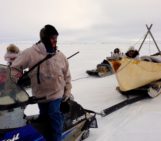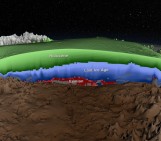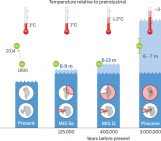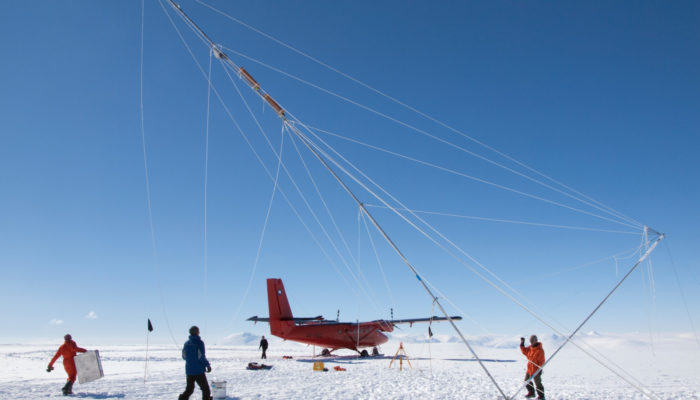
To us, the cryosphere has always been a priority. It is our field of interest, research, maybe passion, it is the stuff that gets us excited. Now, the cryosphere also became a priority to the World Meteorological Organisation (WMO). In today’s post we cover a recent news item introducing this very decision made during WMO’s recent congress. Read along to find out why they emphasize the importance of polar and alpine research.
Why care about changes in the cryosphere?
If you are a frequent reader or writer of this blog, you know a lot about how global warming leads to the current drastic cryosphere changes and how this in return has a global impact. For those of us living in the low latitudes, polar and alpine regions seem far away and out of sight. Apart from the fact that there are a lot of people living in areas directly impacted by the changing cryosphere, the majority of the world’s population might perceive themselves unaffected from those changes. But are they/we really? The short answer is: No. Even if indirectly, we are all impacted by accelerating warming of these frozen realms. Our entire planet is connected through oceanic and atmospheric currents, so that any change in one area, which has impacts on ocean or atmospheric properties (temperatures, humidity, density, gas fluxes) can be carried on to other regions and latitudes. This means that climatic changes in the Arctic have an impact on our climate and weather in Europe. These connections between far away regions are called teleconnections. Although these are often complex and hard to quantify, their recognition through the IPCC slowly seeps through to policy-making.
“Rapid changes in cryosphere demand urgent, coordinated action”
This demand is the title of a recent press release from 29 May 2023 by the World Meteorological Organisation (WMO) about an important decision with regards to the cryosphere. Following their recent global congress, the WMO wants to make the cryosphere one of their top priorities and include it into their long-term goals. This decision is based on exactly those fast, alarming and irreversible changes in the cryosphere such as diminishing sea ice, shrinking glaciers and ice sheets, thawing permafrost and changing snow cover (AMAP 2021), and their impacts on sea-level rise, natural disasters and water and food security (IPCC 2022 but you can also read our Cryo Blog summary post).
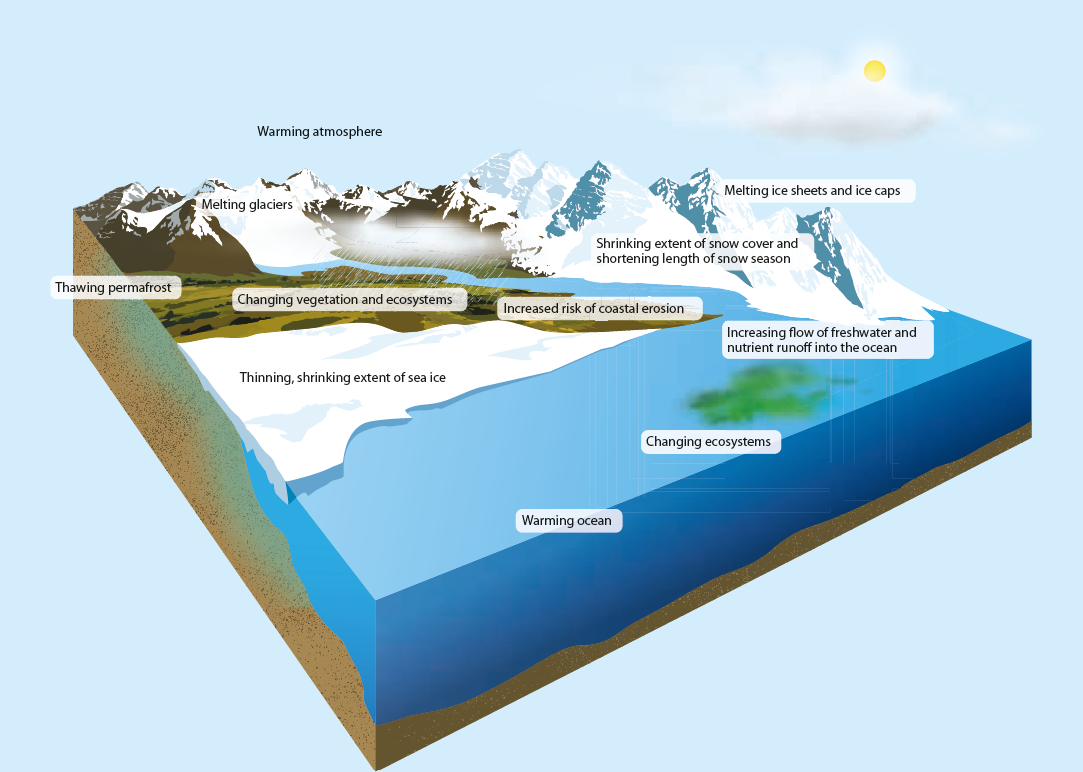
This figure by the 2017 Special report of AMAP, called “Snow, Water, Ice and Permafrost in the Arctic (SWIPA)” represents some of the impacts climate change has on the Arctic as a whole, including some local risks and effects with further reaching consequences (credit: SWIPA 2017, graphic adapted from an image created by the U.S. National Center for Atmospheric Research)
What are the impacts of a changing cryosphere on people’s livelihood?
“Irreversible changes in the global cryosphere will impact adaptation strategies and access to water resources.”
The news statement particularly highlights the decline of “reference glaciers”, especially in alpine systems, the poles and the Greenland Ice Sheet, where they have experienced larger-than-average and alarming declines in the past years. Antarctic sea ice reached the smallest ever-measured extent. While the loss of these ecosystems alone is worth mourning (see our permafrost eulogy here), it also results in real livelihood risks. In general, impacts on people living in the Arctic and alpine areas include:
- freshwater resources are diminishing due to shrinking glaciers
- hunting grounds are changing due to diminishing sea ice
- increased frequency of natural hazards.
On a global scale, Arctic warming leads to an increased sea level, an increased frequency and intensity of flood events and other natural hazards, and not to forget: the sleeping giant – greenhouse gasses released from thawing permafrost ground.
A Call for Action!
In general, the WMO is providing frameworks for international cooperations focussing on meteorological, climatological, and hydrological issues. Within their strategy and long term goals, they aim to promote and support those issues most demanding for the global community and foster collaborations across disciplines on a global scale. Now the WMO is “calling for more coordinated observations and predictions, data exchange, research and services” and they propose to increase research funding. And all of this because several parties (including researchers) repeatedly pointed out:
“What happens in the Polar regions doesn’t stay in the Polar regions.”
Specifically, the WMO now includes risks from the changing cryosphere in their long-term goals by
- prioritizing polar aspects in their global frameworks
- highlighting research gaps
- enabling collaborative and technical support to close these gaps.
With that, they especially highlight a focus on (Ant)arctic research as well as global data sharing, monitoring and modeling efforts.
We wanted to share this article with you because it not only includes an important decision and information for the cryosphere, but it also highlights once again how important our research is and how little attention it gets while having such a global impact. However, we still have to keep in mind that while this is amazing news, it is still not changing the world, but it is again another small step in the right direction. And that after all, decisions like this show that there is hope, that our voices might get heard and actually turned into more and more concrete measures to protect and keep our planet cool.
Written and edited by the Chief Editors
Further Reading
The original article published on 29 May 2023 and can be found here.
Our latest blog posts on the changing cryosphere include:
- A post on vanishing glaciers and a with it a piece of cultural habitat.
- A summary of the latest IPCC outcomes in relation to the cryosphere.
- A post on challenges of high mountain glaciers in Chile.
- A post on sea-ice type changes due to changing global temperatures.
- A post on changing Arctic weather.
- Finally, a post on why the Arctic is warmer faster than the rest of the planet.


